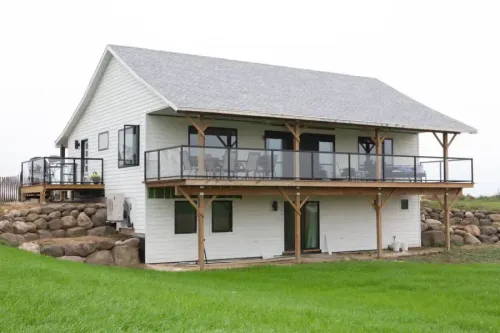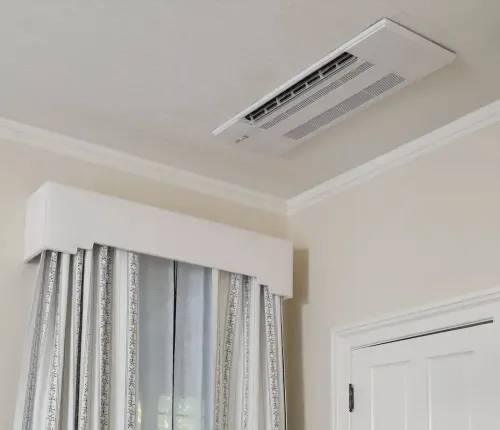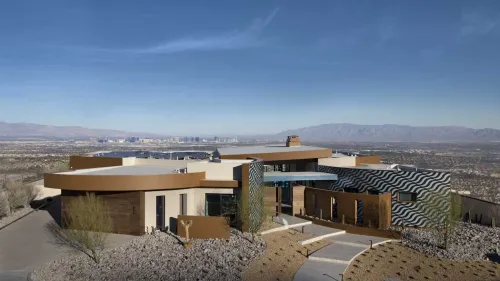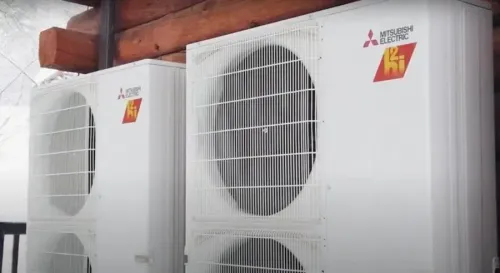Project Location: Chattanooga, Tennessee
Completion Date: April 2017
Challenge
Selecting a super-efficient cooling and heating system needed by four market rate zero-energy homesSolution
Zoned Comfort Solutions® from Mitsubishi ElectricResult
Proof that net-zero homes – with all their comfort and sustainability – can be built and sold at market rate
green|spaces is a nonprofit that works to advance the sustainability of living, working and building in Chattanooga, Tennessee, and the surrounding region. In 2014, green|spaces hosted a competition challenging participants to design a zero-energy, market-rate home. The winning design was adapted and built, and is now a 1,700-square-foot home – one of four planned. All four will feature Hyper-Heating INVERTER® (H2i®) technology from Mitsubishi Electric Zoned Comfort Solutions®.
Michael Walton, Aia, LEED Ap, executive director, green|spaces, worked with Chattanooga-based firm Workshop:Architecture and other consultants to bring the winning design to life. He said, “Chattanooga really saw what happens when you forget about environmental sustainability and do what’s expedient and cheap. It was the dirtiest city in the country in the late 60s. City leaders and local foundations really turned it around through a concerted effort, and Chattanooga is now this great, green tourist destination. The challenge now is to get the residential market to catch up with what the city is doing.”
He continued, “The problem is, builders say no one is asking for sustainability while homeowners say no one is providing it. So this project is meant to say, no, look, you can build it and you can ask for it.” Wayn Wiliams, Aia, LEED Ap, principal, Workshop:Architecture and a board member of green|spaces, added, “This project – NextGen Homes – is a proof of concept.”
To kick off the project, green|spaces hosted a competition asking entrants to design a net-zero house. Williams said, “Chattanooga’s mixed-humid climate really drew us to net-zero. We have a short but significant heating season, a really significant cooling season and high humidity most of the year.”
Between the climate and the steep, sloped lot, the design competition was a challenge for the team. Kim Ray, vice president, Conditionaire Company, Inc., Chattanooga, designed the HVAC system on the winning entry and eventual build. He said, “The house’s biggest need was energy efficiency to achieve net-zero. We promoted ductless for the house because of the INVERTER technology and zoning applications, and also to hold the costs down with the limited amount of space to do ductwork.”
He continued, “We knew there would be two zones to the house because it has an upper floor and a lower floor. We settled on two different ductless systems – one for each floor. The lower floor would also have an ERV system to distribute the air. By combining the ERV with a 26 SEER wall-mounted ductless unit, we could control the cost while maintaining high efficiency and providing variable capacity.”
Walton agreed with the selection of zoned technology: “The biggest drivers for the mechanical systems were efficiency and resilience. We considered several options – as we did with each element going into the house – and we knew electric heat pumps were the answer. Ground-source, for example, would have been too expensive, killing our budget. We needed not just the most efficient system, but the most efficient for the money.”
From Williams’ perspective, zoned technology also offered a proven solution. “We were looking for state-of-the-shelf technologies – ones with a bit of a track record that the existing construction community can tackle with a short learning curve.” In addition to liking the technology, Williams trusted Mitsubishi Electric as a brand: “They’re the leading manufacturer, and they provide a lot more support. We get onsite representation and a local [subcontractor] who’s very familiar with the systems.”
Ray said, “Mitsubishi Electric is our first choice, as well. We’re a Diamond Contractor®, and we’ve used Mitsubishi Electric’s 1-to-1 application since the 80s, mostly for sunrooms, bonus rooms and garages. In recent years, we’ve started using their multi-zone system in traditional, whole-house applications. Mitsubishi Electric is a good product. The efficiency is key – due to their INVERTER technology. Plus the systems are very quiet.” Ray has also appreciated working with distributor Partners Supply, Chattanooga. “They’ve been very good, and have offered strong local support. I’ve always had trained field service reps available to us as a resource.”
The installation was “very straightforward. It’s just running line sets for the ductless section and then setting in the equipment,” said Ray. With the house completed and on the market, the project team now looks forward to learning who the lucky homeowners will be. Why lucky? “Between the solar array and other efficiency strategies, the homeowners won’t have a utility bill,” said Walton. Williams added, “The cost of ownership should be really, really low. And I think that’s how we pitch this to a broader audience. Some people are motivated to do the right thing. But we broaden our audience not by being green, but by offering high performance for a low cost of ownership.
When it comes to performance, the numbers are already looking good. The home’s expected HERS score (Home Energy Rating System) won’t be “zero, which you’d expect for a zero-energy house. But as our consultant pointed out, the HERS model makes conservative assumptions in terms of how a home will be used and what appliances will be put in. Our consultant generally sees zero-energy homes with HERS scores in the teens. Ours is slightly positive,” said Walton.
He continued, “We’re also going to be getting Energy Star® 3.0 and a local recognition called Smart Build. And then we’re shooting for net-zero certification, but we won’t know until a year has passed. For us, certifying the home is like building it – we wanted the best thing for the money, and our local utility offers both Energy Star and Smart Build for free.”
Of course, homeowners also want homes that are easy to live in; these days, controls are a big part of that. Ray said, “A Thermostat Interface will be used to give owners the option of using a wired thermostat or home automation system to control their units.” For now, they’ll use a Schneider Electric Wiser Air smart thermostat. Between that interface and Zoned Comfort Solutions’ easy operation, Ray said, “The homeowners will really like having the control that the system offers. They’re going to have a good comfort level.”
With homeowners selected any day now, Walton is eager to see how the experiment plays out. He said, “Healthier, green features are simple to get, but you have to ask for them. So our goal is to teach people what to ask for. Eventually, we want these features to be like air conditioning itself. We didn’t have a/c all that long ago. On the whole scale of the built environment, it’s a relatively recent thing. But go try to sell a house without it. We want to see that same level of demand with zero-energy ready houses. Our NextGen Homes are just the start.”
Project Team
- Architect: Workshop:Architecture, Chattanooga, Tennessee
- HVAC Contractor: Conditionaire Company, Inc., Chattanooga, Tennessee
- Distributors: Partners Supply, Chattanooga, Tennessee
Equipment Installed
- (2) MUZ M-Series Outdoor Units
- (2) MSZ Wall-mounted Indoor Units
- (1) PAC Thermostat Interference









